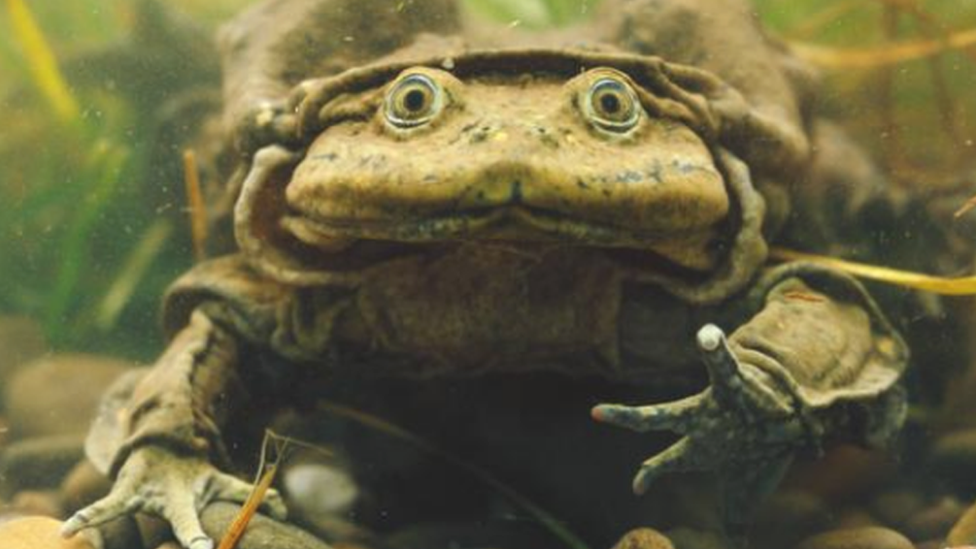Peru investigates death of 10,000 Titicaca water frogs
- Published

The Titicaca water frogs are an endangered species
Peru's environmental agency is investigating the deaths of some 10,000 frogs whose bodies have been found in a river in the south of the country.
A campaign group says pollution in the River Coata is to blame for the deaths.
It says the government has ignored pleas for the construction of a sewage treatment plant in the area.
The Titicaca water frog is an endangered species that is found only in the huge freshwater lake shared by Peru and Bolivia and its tributaries.
The Committee Against the Pollution of the Coata River told the AFP news agency that the Peruvian authorities had failed to address a serious pollution problem.
Activists took about 100 dead frogs to the central square in the regional capital, Puno.
"I've had to bring them the dead frogs. The authorities don't realize how we're living," protest leader Maruja Inquilla told AFP.
"They have no idea how major the pollution is. The situation is maddening."
Peru's National Forestry and Wildlife Service (Sefor) said it was investigating what happened.
"Based on local residents' statements and samples taken in the days after the incident, it is believed that more than 10,000 frogs were affected over about 50km (30 miles)," .
The Titicaca water frog (Telmatobius culeus) has enormous folds of skin, which increase its surface area and help the amphibian absorb more oxygen from the surrounding air.
As a result of their baggy skin, they are sometimes called Titicaca scrotum frogs.
The frogs are critically endangered because humans have collected too many to eat, their habitat is being lost and invasive species are taking over what remains of it.
- Published14 May 2015
- Published5 January 2013
- Published4 September 2023